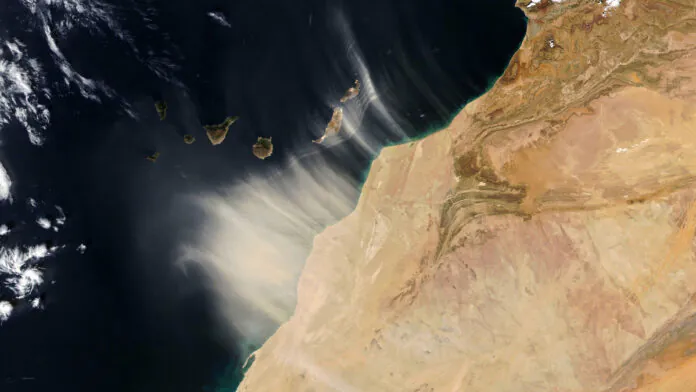© ROOT-NATION.com - Use of content is permitted with a backlink.
Scientists on Earth will soon be investigating dust in our planet’s atmosphere in high resolution, thanks to a new, state-of-the-art spectrometer developed by NASA’s Jet Propulsion Laboratory and Cornell University that will monitor the planet from a 400 km distance aboard the International Space Station.
The launch of this tool aboard the SpaceX Dragon rocket with a mission to deliver cargo to the ISS is scheduled for June 7 from the Kennedy Space Center, located at Cape Canaveral, Florida, USA.

As part of this mission, scientists want to gain a deeper understanding of how atmospheric dust contributes to the warming or cooling of the Earth.
“We’re trying to characterize the dust particulates that are blown from the surface into the atmosphere,” said Natalie Mahowald, an atmospheric scientist at Cornell, who serves as the mission’s deputy principal investigator. “One of the biggest uncertainties in the climate system comes from aerosols, and dust aerosols are both important aerosols for climate change, and desert dust can change in response to climate change.”
“These aerosols — or dust – can be small or big, they can be lighter or darker, as all these different things are spatially heterogeneous,” she said. “They’re just really complicated.”
This spectrometer will be called the Earth Surface Mineral Dust Source Investigation Mission, or EMIT, and is designed to measure the composition of minerals in the Earth’s deserts that are exposed to wind erosion in the atmosphere.

There are many types of atmospheric dust. Dust consisting of particles containing iron oxides (rust) has a darker hue and helps to warm the atmosphere. On the contrary, clay or carbonate particles reflect sunlight and can help cool the atmosphere. This 80-kilometer-wide scanning instrument will measure the amount of reflected light in the visible and infrared ranges, collecting more than 1.6 gigabits of data every second so that scientists can map the mineral components located on the Earth’s surface. More than 1 billion useful spectroscopic measurements are expected to be conducted as part of the mission.

According to the project participants, the obtained data on the influence of dust particles on the heating and cooling of the Earth’s atmosphere will also help in compiling climatic models of exoplanets.
You can also help Ukraine fight with Russian occupants via Savelife or via an official page of the National Bank of Ukraine.
Read also:
- A massive asteroid will soon pass near the Earth
- A new look at galaxy rotation saves the controversial gravity theory


